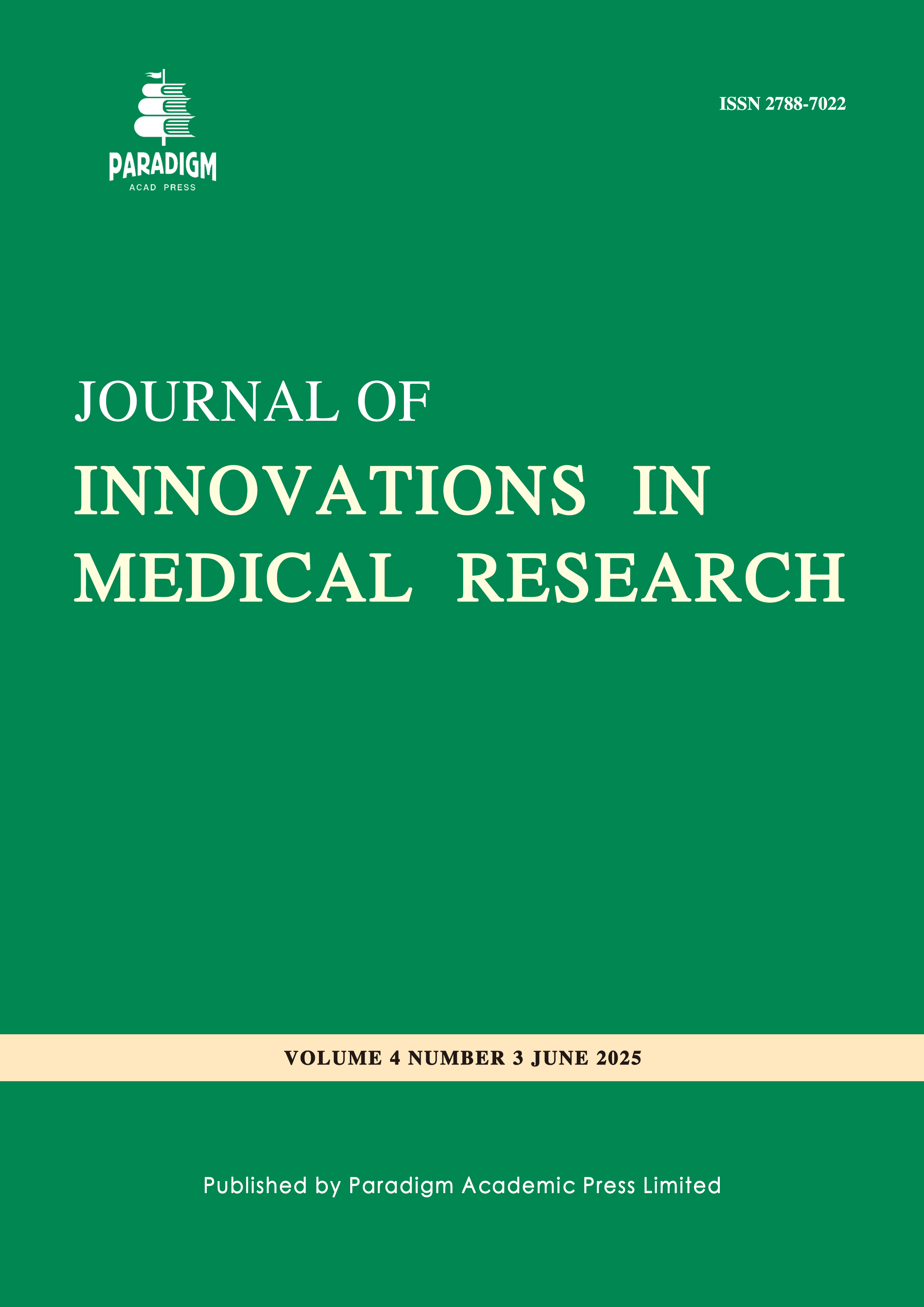Histopathological and Biochemical Evaluation of β-Sitosterol from Lawsonia Inermis in Aspartame-Induced Testicular Toxicity in Wistar Rats
DOI:
https://doi.org/10.63593/JIMR.2788-7022.2025.06.002Keywords:
aspartame, β-sitosterolAbstract
Introduction: This study aims to evaluate the modulatory impact of β-sitosterol isolated from lawsonia inermis on Aspartame mediated testicular toxicity in Wistar rats. Settings and Design: Forty-five male Wistar rats were used for the study. The rats were divided into nine groups; each containing five rats and were treated daily for 30 days. Group 1 received 5mls of distilled water orally, group 2 received 40mg/kg of aspartame (ASP) for 20 days, while group 3 received 160mg/kg of ASP for 20 days, and group 4 was given 60mg/kg of β-sitosterol (β-sit.) for 20 days, while group 5 received 100mg/kg of β-sit. for 20 days. Group 6 received 40mg/kg of ASP for 15days followed by 60mg/kg β-sit. for the next 15 days, while group 7 had 160mg/kg ASP for 15 days, then 100mg/kg of β-sit for 15 days. Group 8 was given 60mg/kg β-sit. for 15 days, preceding 40mg/kg ASP for 15 days while group 9 received 100mg/kg β-sit. for 15 days, then 160mg/kg ASP for 15 days. Results: At the end of the experiment it was observed that there was less weight gained in group 2, 3, 6 and 8 while group 5 and 7 gained weight significantly. Histological studies using H&E showed cellular necrosis within the seminiferous tubules (ST) as well as marked edema in the intertubular spaces in groups 2 and 3 while group 4 appeared fairly normal, groups 5 and 6 showed the lumen with very few spermatozoa present. Groups 7, 8, and 9 had normal seminiferous tubules with mild edema levels in the intertubular spaces. These observations were corroborated by PAS staining technique which further revealed extensive erosion of the basement membrane and loss of connective tissue and Leydig cells in groups 2 and 3 including cellular distortion, groups 5, 6, 8, and 9 showed mild to moderate levels of edema in the intertubular spaces. An assay of GPX showed increased levels mostly in group 3 (p‹0.05). MDA was also significantly higher in groups 2, 3 and 6 (p‹0.05). Catalase activity decreased significantly in groups 2, 3, and 5 (p‹0.05) with improvements in groups 6, 7, and 8. Conclusion: It was observed from the results that aspartame can induce a series of deleterious oxidative changes in the testes resulting in possible impaired testicular function, however, β-sitosterol isolated from lawsonia inermis may modulate the effects of aspartame when administered 15 days sequel to an initial 15 days exposure to aspartame.



